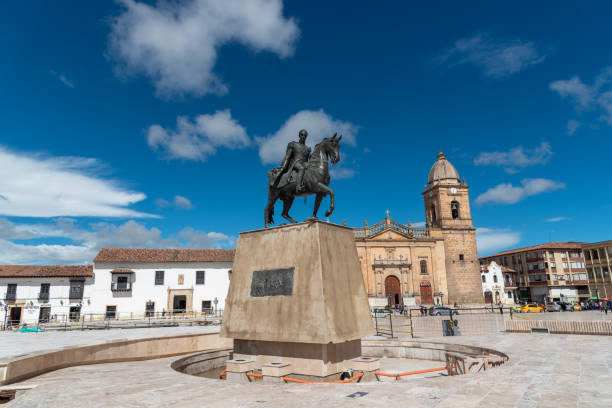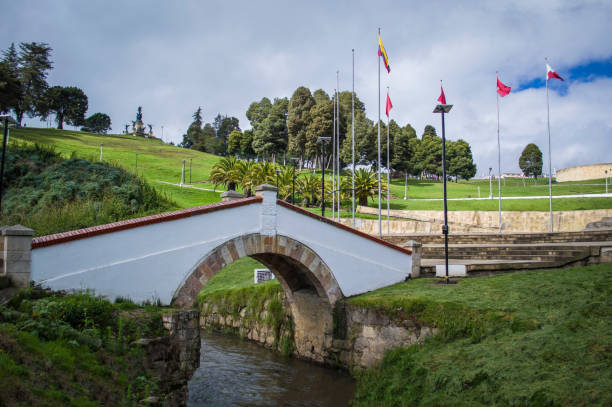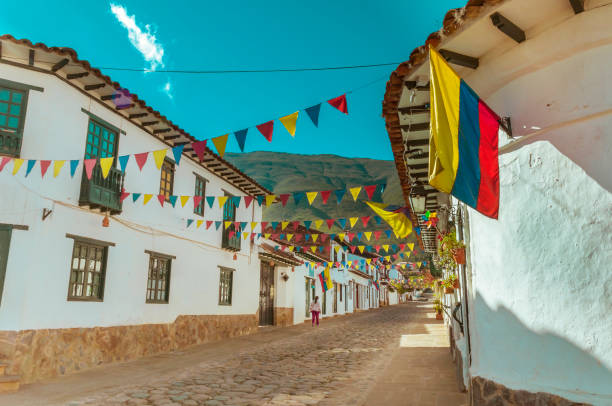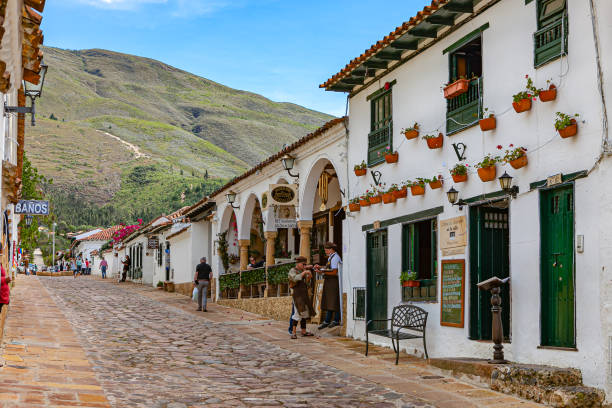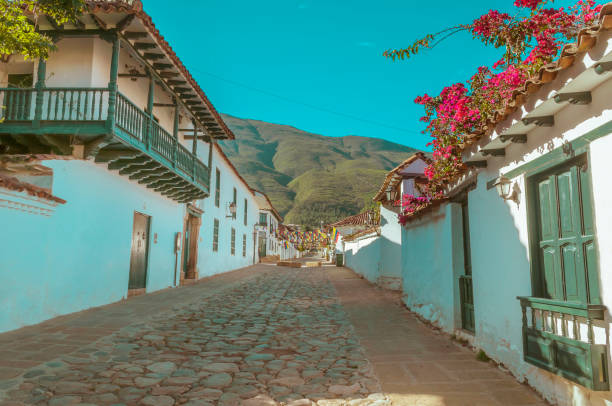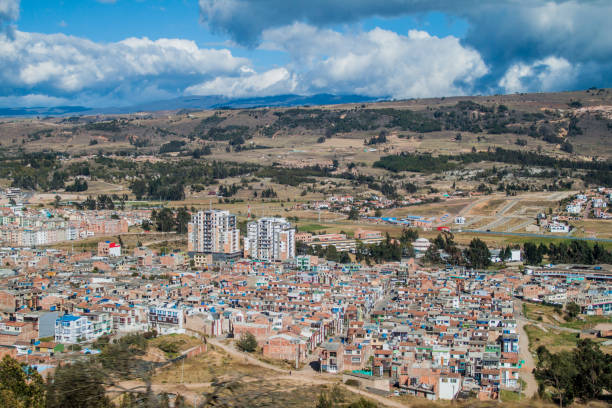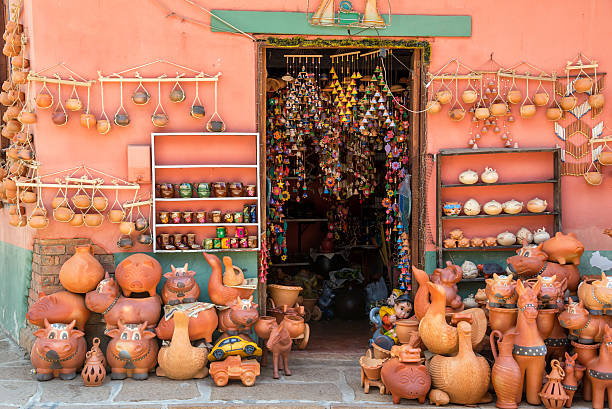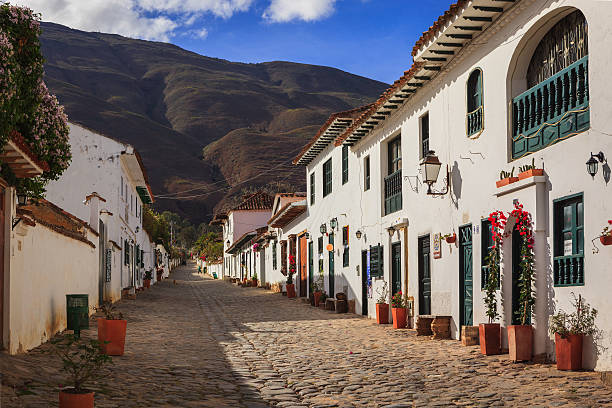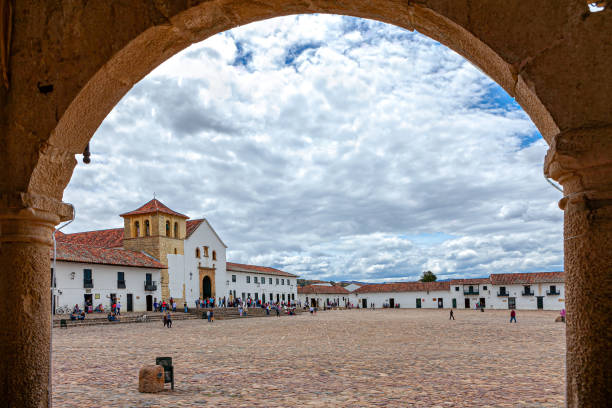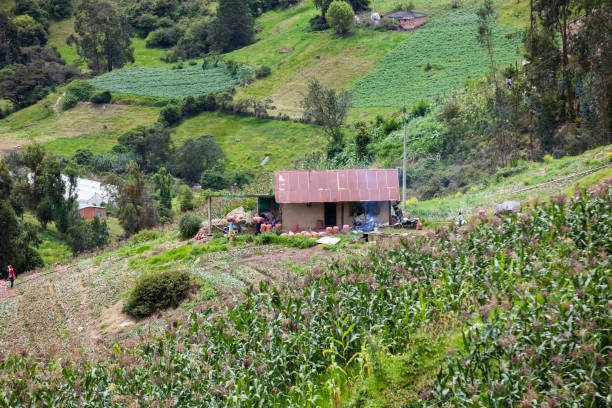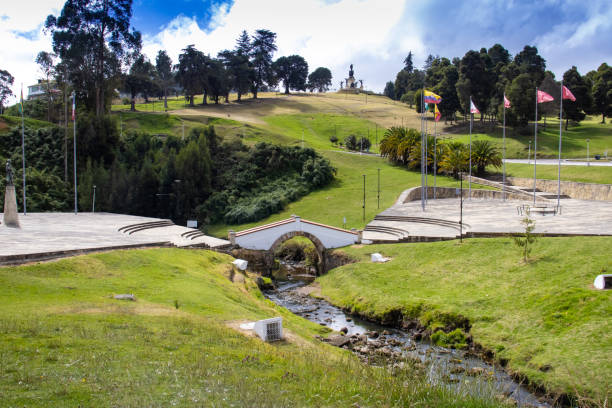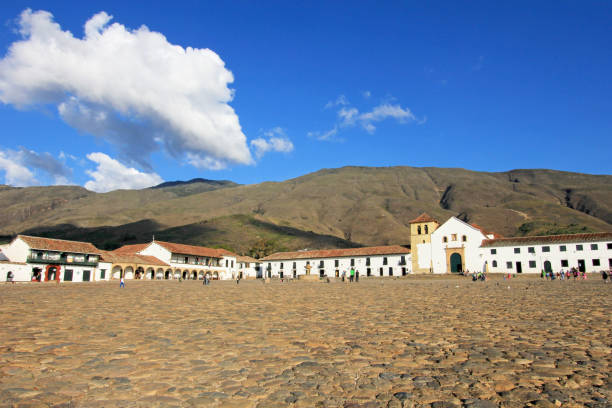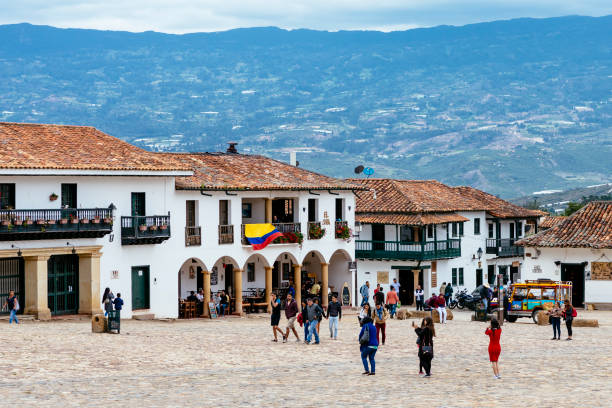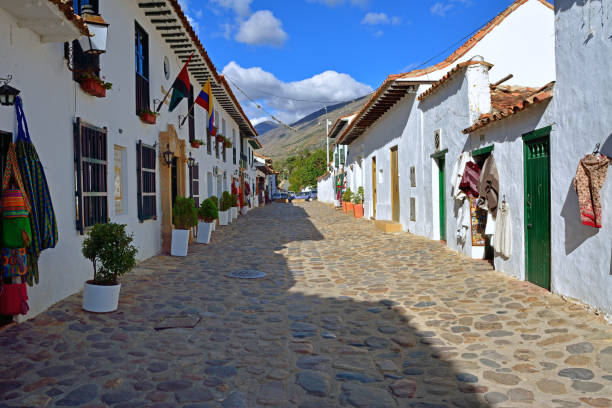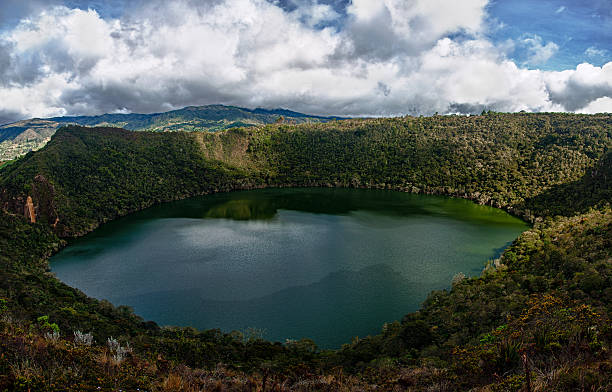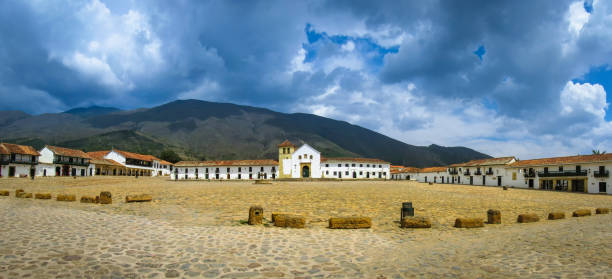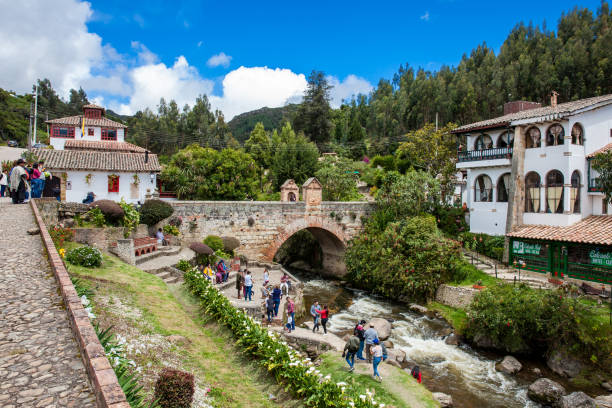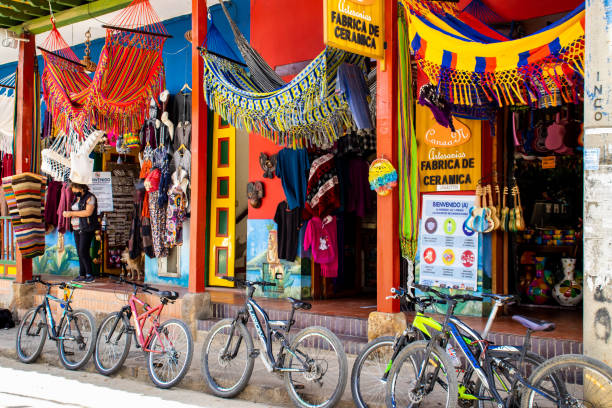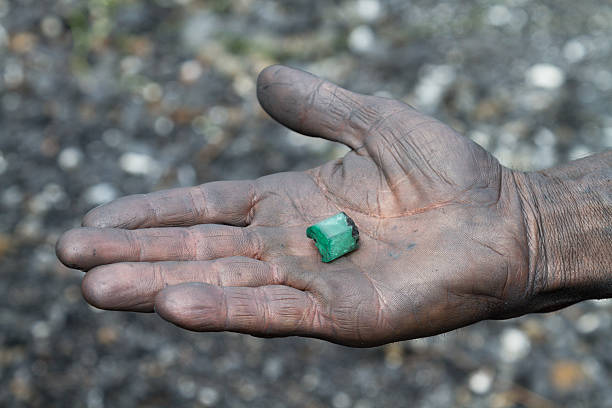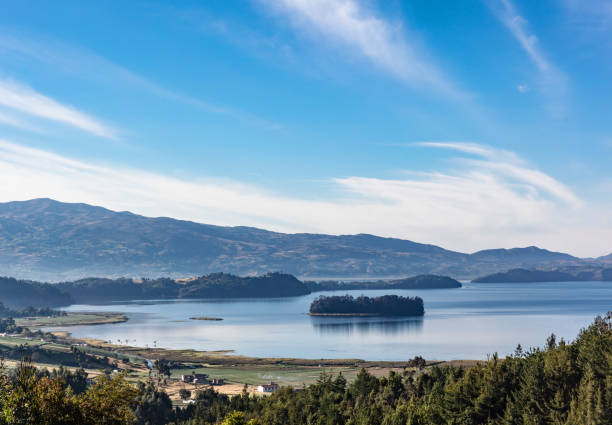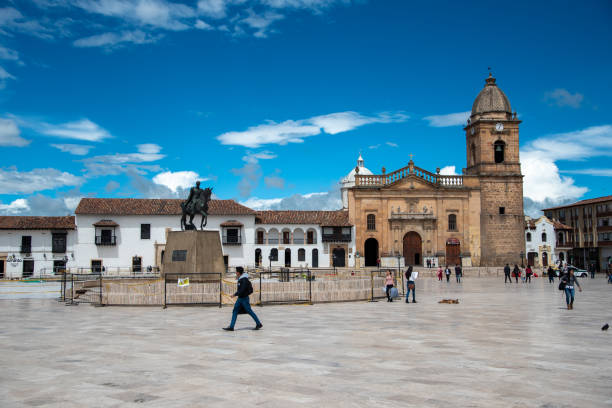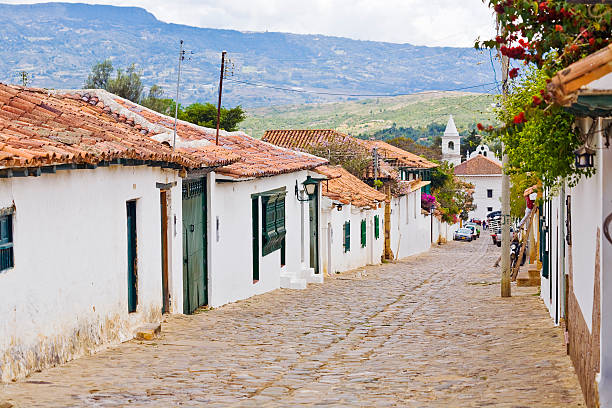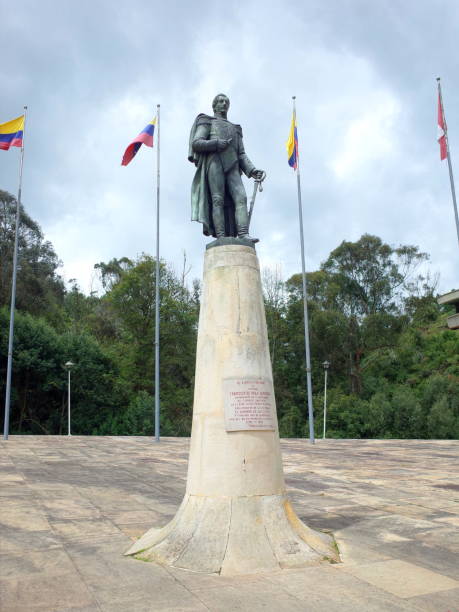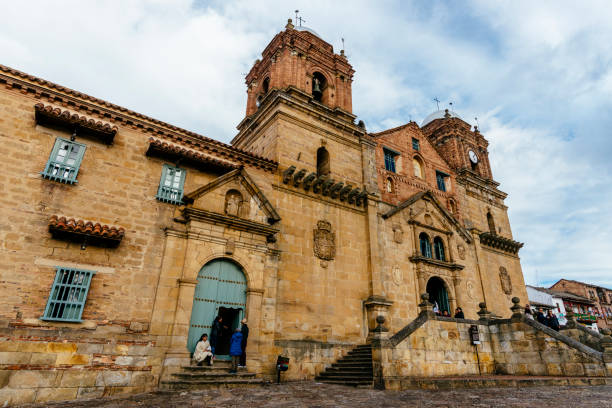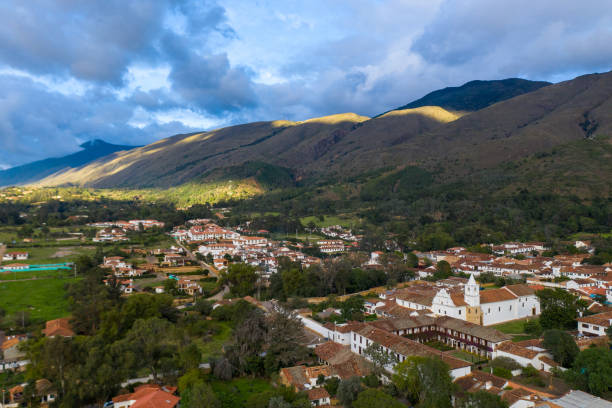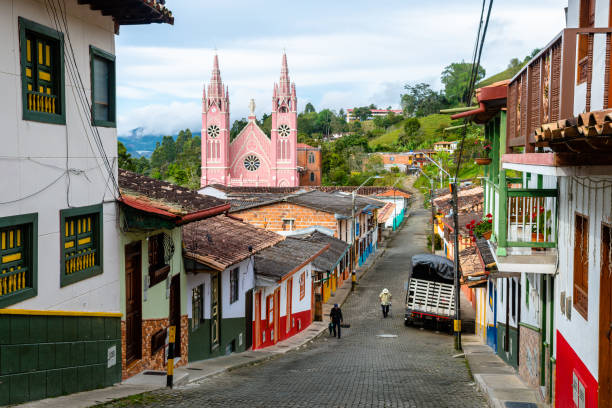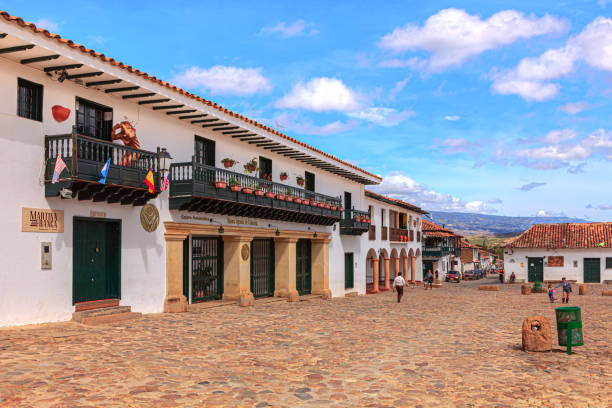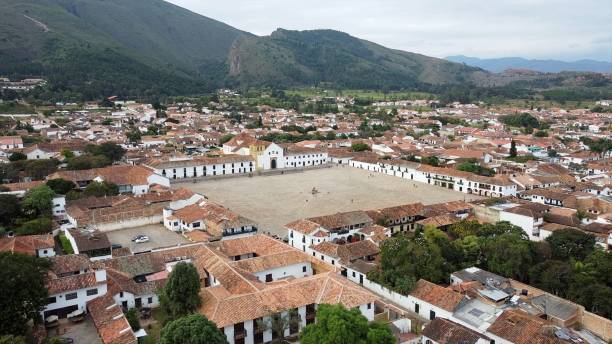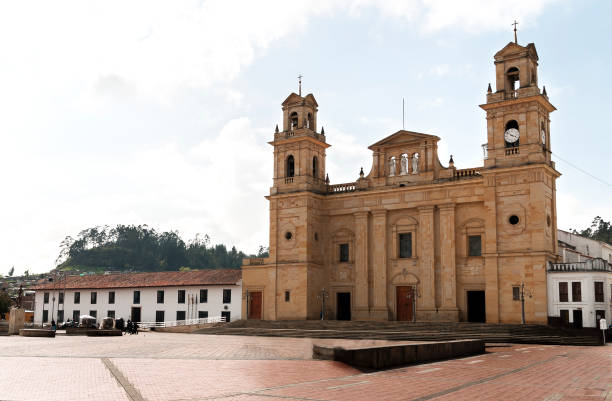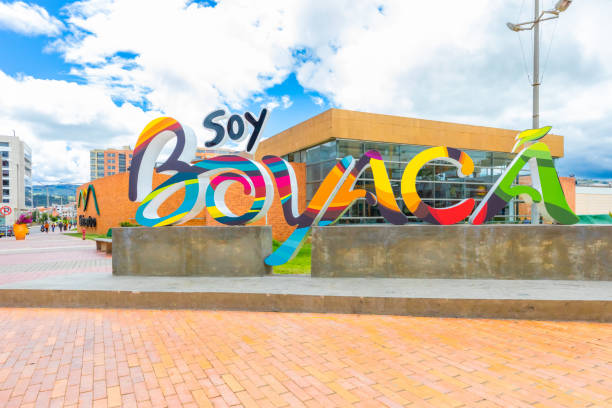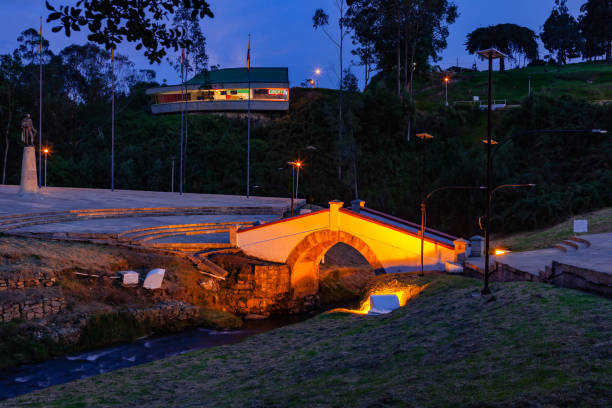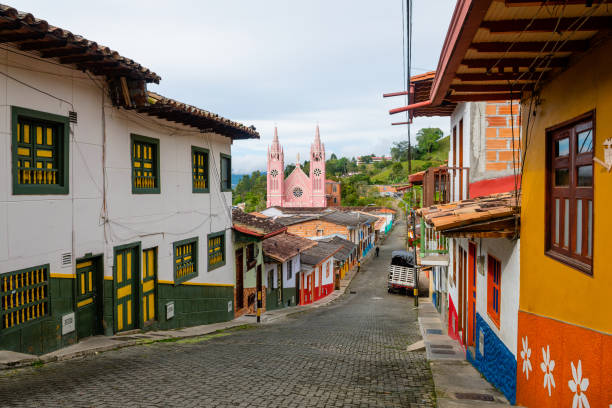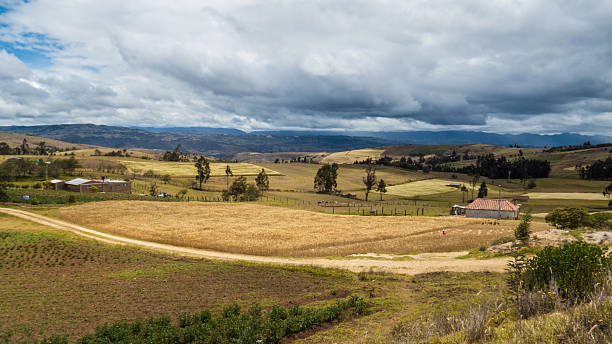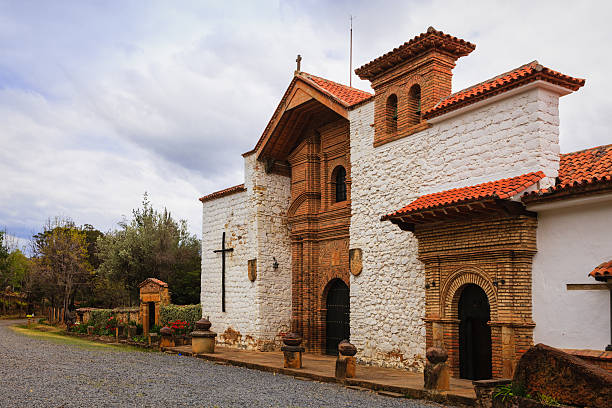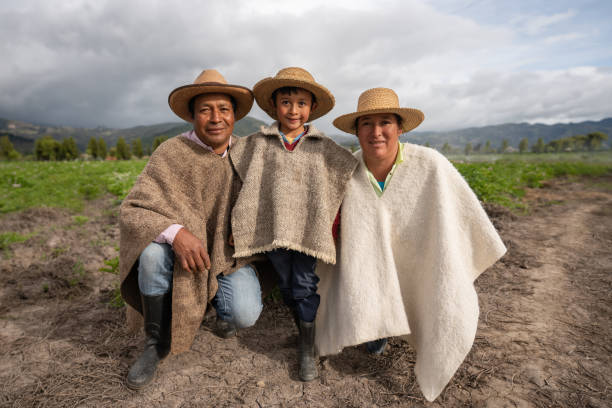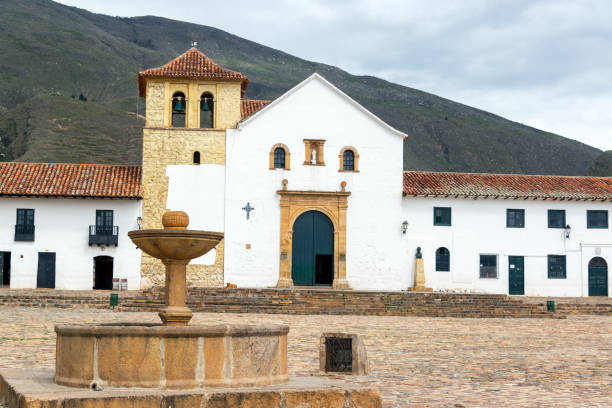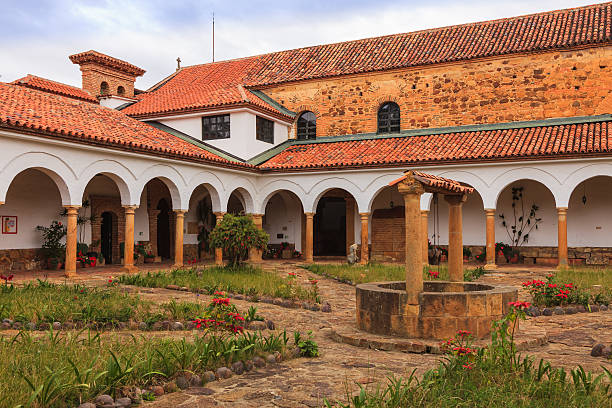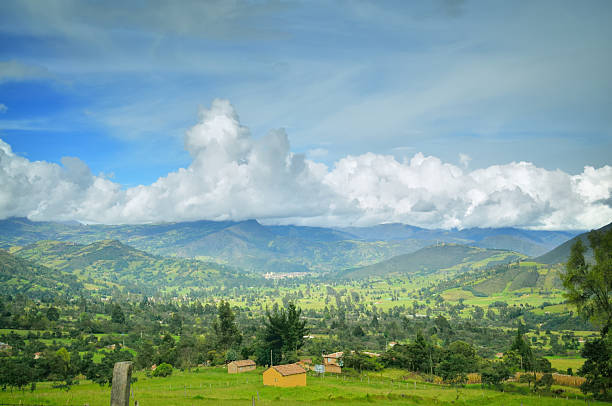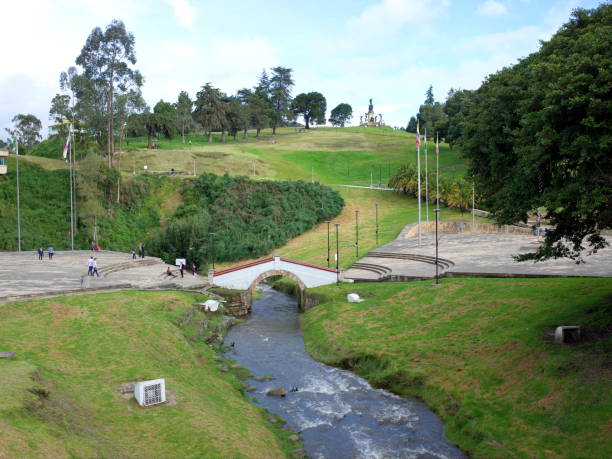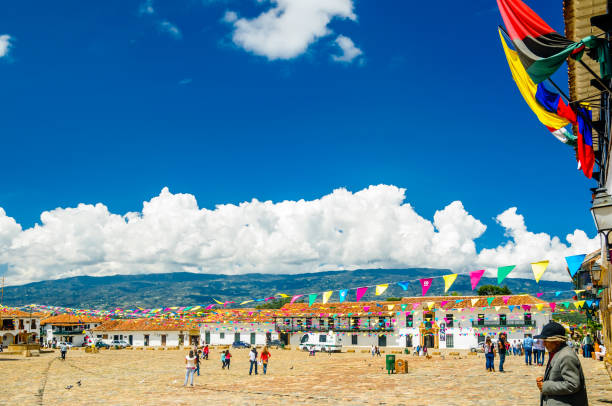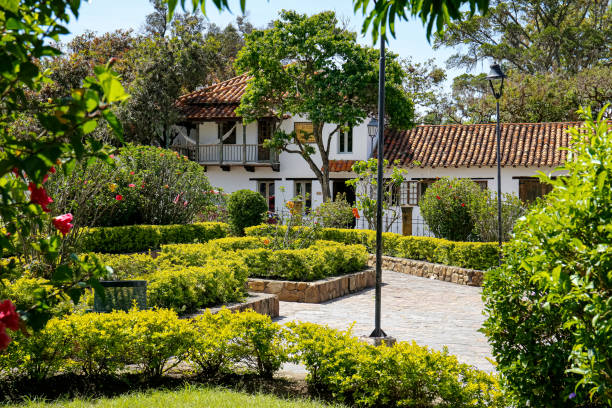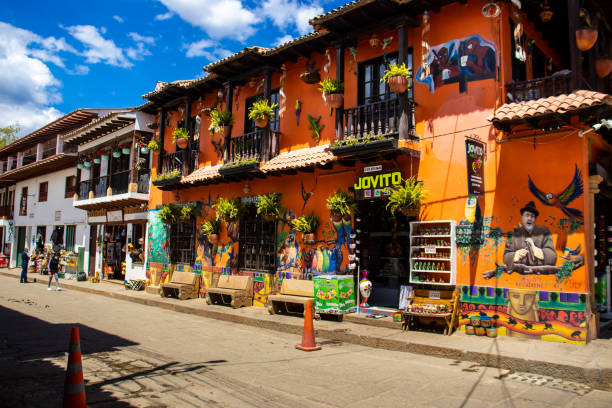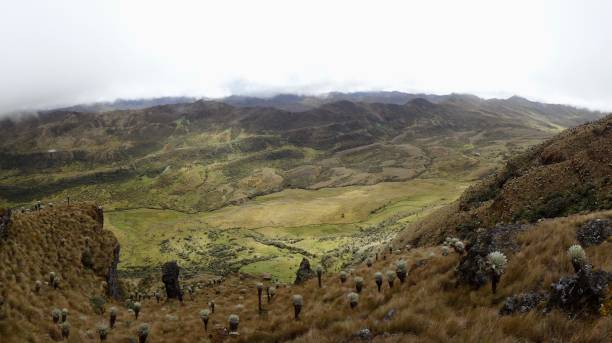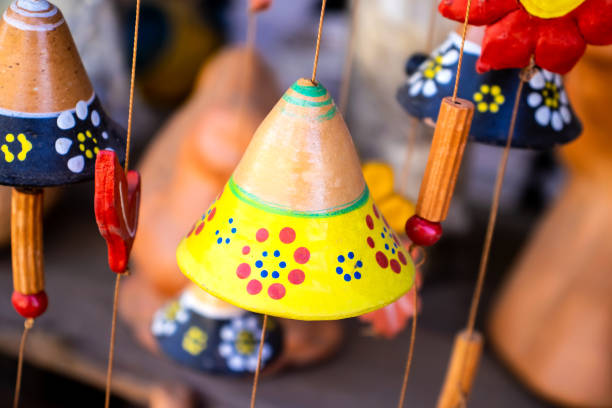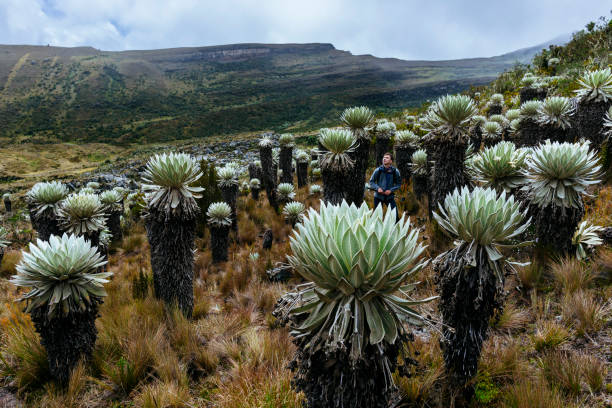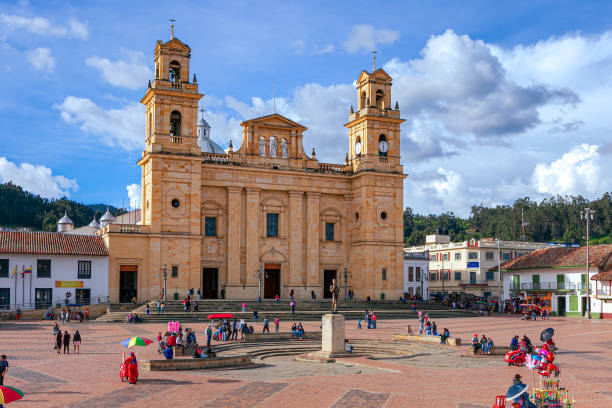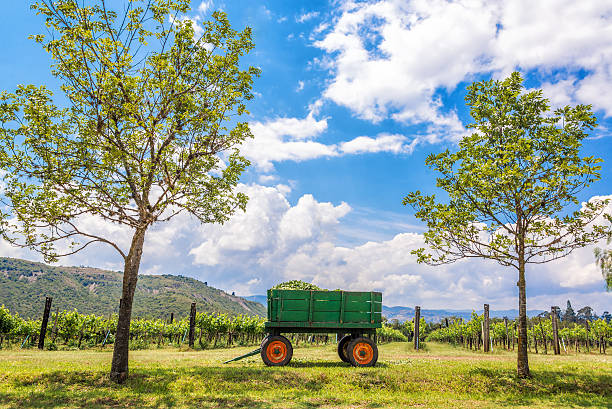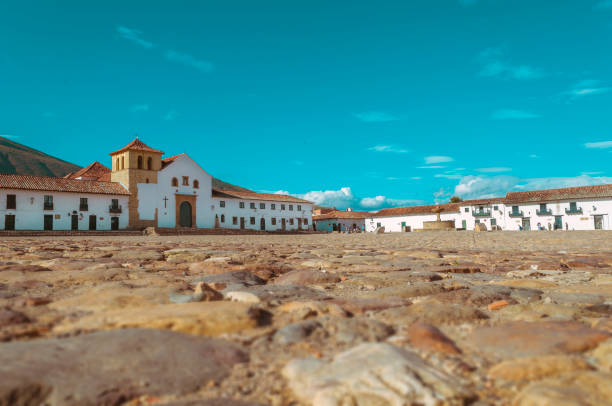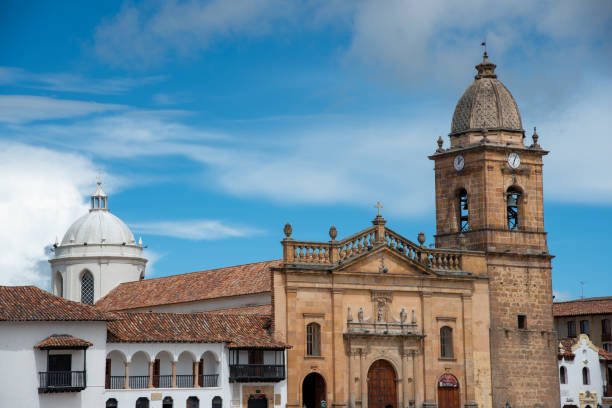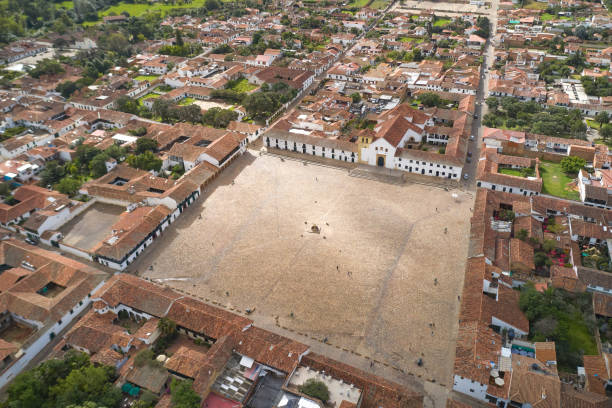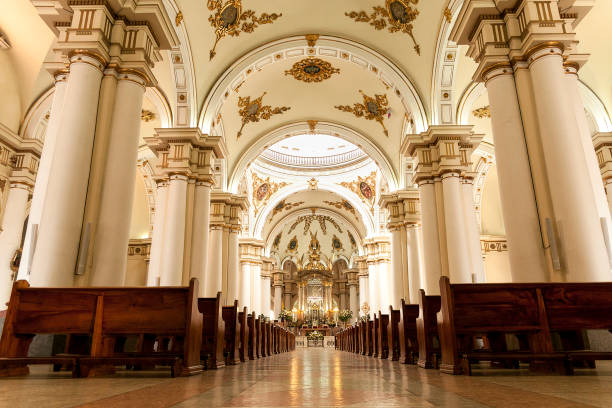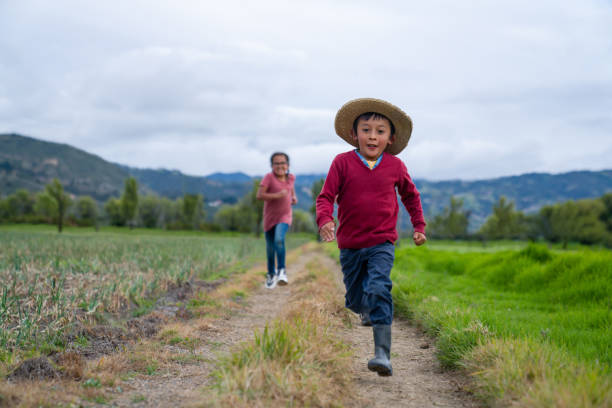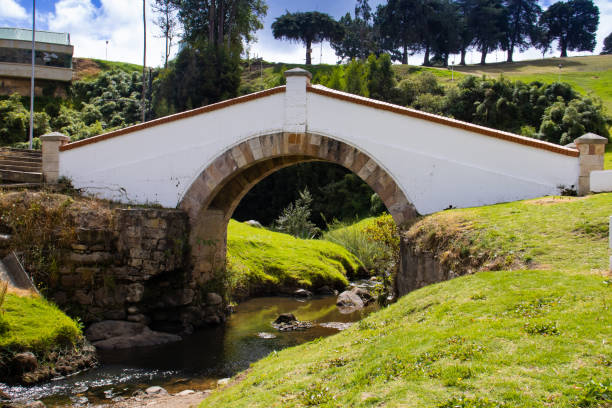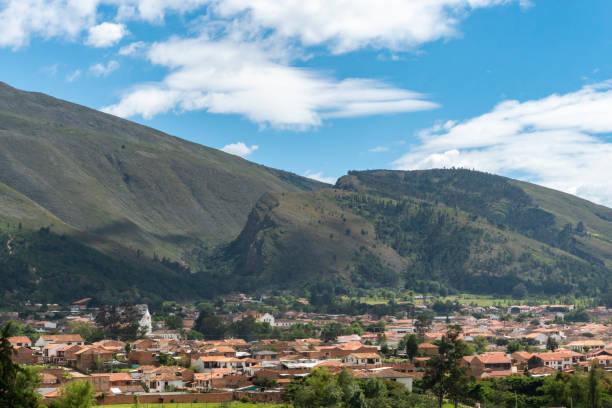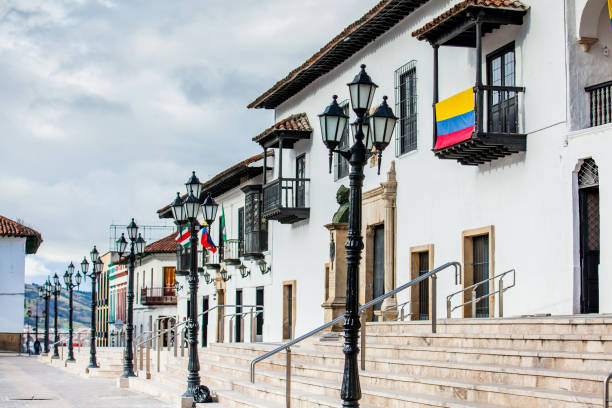
Boyacá Department Photos Pictures, Images and Stock Photos
Browse 2,400+ boyacá department photos stock photos and images available, or start a new search to explore more stock photos and images.

Monument of Simon Bolivar in the main square of the city of Tunja with a catholic church in the background. Boyaca. Colombia . May 24, 2019.
Sunny day at 13TH Street in Villa de Leyva Colombia
Couple of Latin American farmers looking at their land after harvesting the crop and pointing away â agricultural lifestyle concepts
Villa de Leyva, Colombia - November 26, 2017: looking up Calle 13 in the historic 16th Century colonial town of Villa de Leyva in the Boyacá Department. To the right are a row of restaurants one after the other, with a member of staff standing on the street trying to entice customers into their restaurants. In the far background is a section of the Andes Mountains. Founded in 1572 and located at just over 7000 feet above mean sea level on the Andes Mountains, Villa de Leyva was declared a National Monument by the Colombian Government in 1954 to protect its colonial architecture and heritage. The Town was also one of the locations for the movie Cobra Verde by Werner Herzog, and the Spanish language Soap Opera Zorro. Photo shot in the midday sunlight; horizontal format. Copy space.
Street of Villa de Leyva at the morning. You can see the Real liquor factory house.
Laguna de Tota Lake Boyaca in Colombia South America
Typical souvenirs for sale in a shop in Raquira in Boyaca, Colombia
Villa de Leyva, Colombia - September 14, 2014: It is Sunday morning in Villa de Leyva and Calle or Street 14 is almost lifeless. The shops and restaurants will open; but, only towards noon. Founded in 1572 and located at just over 7000 feet above sea level on the Andes Mountains, Villa de Leyva was declared a National Monument in 1954 to protect it's colonial architecture and heritage. It is located in the Department of Boyaca, in the South American country of Colombia. In the background are the always present Andes Mountains. Photo shot in the morning sunlight; horizontal format. Copy space.
Villa de Leyva, Colombia - The church on the Plaza Mayor of the historic 16th Century town of Villa de Leyva. Founded in 1572 and located at an altitude of just over 7000 feet above mean sea level on the Andes Mountains, Villa de Leyva was declared a National Monument by the Colombian Government in 1954 to protect its colonial architecture and heritage. It is located in the Department of Boyaca. The square is the largest town square in Colombia. People visiting the town and local residents are seen on the square just sitting and relaxing, chatting with friends or going about their routine chores. In the far background are the Andes Mountains. The Town was one of the locations for the movie Cobra Verde by Werner Herzog and the Spanish language Soap Opera Zorro. Photo framed with an arch and shot in the morning sunlight; horizontal format. Copy space.
A view of the town square in Villa De Leyva, Colombia, South America
Villa de Leyva, Boyaca, Colombia, 30.th of June 2018: Street scene of the main square in Villa de Leyva
Villa of Leyva
A beautiful pristine lake in Colombia
Mongui, Colombia - August, 2019: Tourists visiting the Royal Bridge of Calicanto at the beautiful small town of Mongui in Colombia
Raquira, Colombia - February 2021. Handicraft shop at the beautiful small town of Raquira.The city of pots, Colombia
Laguna de Tota Lake Boyaca in Colombia South America
Passerby passing in front of the statue of Simon Bolivar in the Plaza de Tunja with the church in the background. Boyaca. Colombia. May 24, 2019.
A 500 Year Old Colonial Town In Colombia, South America
19th June 2017, Tunja, Colombia - The statue of Francisco de Paula Santander at Puente de Boyaca, the site of the famous Battle of Boyaca where the army of Simon Bolivar, with the help of the British Legion, secured the independence of Colombia
Mongui, Boyaca, Colombia - July 02, 2018: Convent of the Franciscans in Mongui
Aerial view of a colonial-style church and houses of the same style with mountains in the background in the town of Villa de Leyva. Colombia.
street view of jerico colonial town in aintioquia, colombia
Villa de Leyva, Colombia - September 14, 2014: looking down Calle or Street 12 towards the Western corner of the cobblestoned town square on a sunny Sunday morning. It looks as if time has stood still in this town for about 450 years. In the far background are the Andes Mountains, the Cordillera Oriental. Founded in 1572 and located at an altitude of just over 7000 feet above mean sea level on the Andes Mountains Villa de Leyva was declared a National Monument by the Colombian Government in 1954 to protect its colonial architecture and heritage. It is located in the Department of Boyacá, in the South American country of Colombia. The Town was one of the locations for the movie Cobra Verde by Werner Herzog and the Spanish language Soap Opera Zorro. Photo shot in the morning sunlight; horizontal format. Copy space.
Exterior View of Basilica of Our Lady of the Rosary in Chiquinquirá - Boyacá - Colombia.
Tunja, Colombia May 10 This sign welcomes visitors in the colonial city of Tunja. The sign is located in the historic center of the city. Shoot on May 10, 2019
Latin American family working in agriculture at a farm and looking at the camera smiling while wearing ruanas â lifestyle concepts
Espeletia Frailejones of the Paramo de Oceta Mongui Boyaca in Colombia South America
The Puente de Boyacá in the Colombia Department of Boyacá is a National Monument and symbolizes the independence of Northern South America from the colonial power of Spain. The key battle of Boyacá was fought on August 7, 1819, in the vicinity of the bridge over the Teatinos River and paved the way for the freedom of Colombia, Panama, Venezuela, Ecuador and Peru. Consequently the New Kingdom of Granada was established. The bridge, built in the early 18th Century, was declared a National Monument and dedicated as a memorial to independence in 1920. On the hill in the background is a restaurant; no names are visible. The only neon sign says, "Abierto" in Spanish, which translated to English, means, "Open." The exterior of the restaurant, seems to have been badly painted over in an attempt to cover graffiti. Photo shot during the Blue Hour; horizontal format. Camera: Canon EOS 5D MII Lens: Canon EF 24-70mm F2.8L USM
street view of jerico colonial town in aintioquia, colombia
Colombian landscape of Chivatá.
The entrance to the Monastry of Santo Ecce Homo and the church. The monastry which was founded in 1620; the church was completed in 1661. The facade of the church was restored in the early 19th century. In 1998 the buildings were declared as national archtictural heritage. Photo shot in the midday light on a cloudy day; horizontal format. Copy space. No people.
Latin American family farming in their land wearing ruanas and hats and looking happy â agricultural lifestyle concepts
View of the colonial fountain and church on the main plaza of Villa de Leyva, Colombia
Looking from the courtyard of the Monastry of Santo Ecce Homo towards the old church attached to the monastary. The monastary was founded in 1620; the church was completed in 1661. What looks like a well in the foreground, is actually a tank that stores rain water for use. The buildings are a good example of classic colonial Spanish architecture. In 1998 the monastery was declared a national archtictural heritage. Photos are permitted in every area of the premises. Photo shot in the midday light on a cloudy day; horizontal format. No people.
The Colombian village of Duitama nestles against the Andes mountains in the background.
Puente de Boyaca, the site of the famous Battle of Boyaca where the army of Simon Bolivar, with the help of the British Legion, secured the independence of Colombia
The beautiful deep green and blue colors of Lake Tota.
RAQUIRA, COLOMBIA - FEBRUARY 2021. Beautiful streets and houses of the small town of Raquira. The city of pots, Colombia
Ocetá is a unique place that holds this Paramo which is a unique climate that only existis in the Andean Region of Colombia and Ecuador. It is the home of unique plants such as the frailejon that only grows 1 cm per year.
Chiquinquirá, Colombia - November 26, 2017: It is Sunday afternoon on the Plaza Mayor in the Andes town of Chiquinquirá in the Department of Boyacá, in the South American Country of Colombia. Many local residents and Colombian tourists are seen enjoying the ambience of the town square. Vendors sell toys and snacks to visitors. In the background is the 19th Century Basilica of Our Lady of the Rosary. It houses the famous painting of Our Lady of The Rosary, also referred to as the Virgin of Chiquinquirá, the Patron Saint of Colombia. It is designed in the Neo-classical style of architecture and is a destination of Catholic pilgrimage in South America. The altitude at street level is about 8400 feet above mean sea level. Photo shot in the late afternoon sunlight; horizontal format.
Green wagon framed by two trees on a vineyard near Villa de Leyva in Boyaca, Colombia
View towards the main square of Villa de Leyva from the cobbled floor
Facade of the church with a colonial-style bell tower in a square in the city of Tunja, Boyacá. Colombia. May 24, 2019
Aerial view of the main square of the old town of Villa de Leyva. Boyaca Department. Colombia.
Interior of Basilica of Our Lady of the Rosary in Chiquinquirá - Boyacá - Colombia.
Happy Latin American kids playing outdoors at a farm and running on the road - lifestyle concepts
Villa de Leyva View from afar on a Beautiful Sunny day
